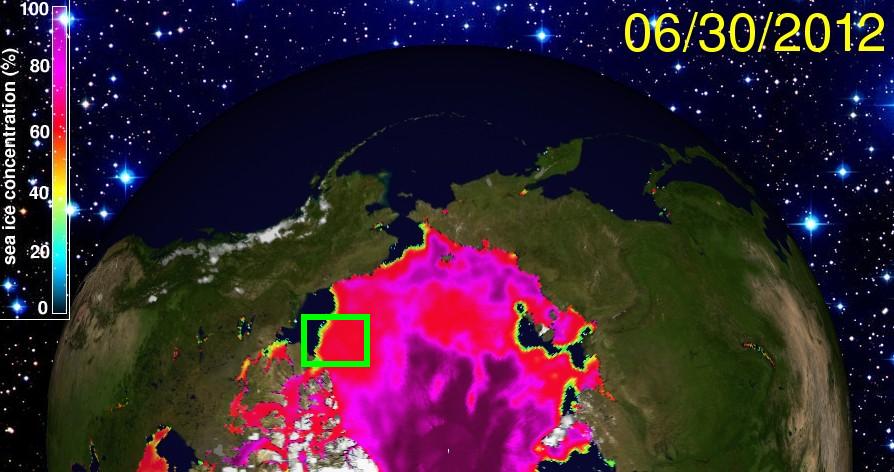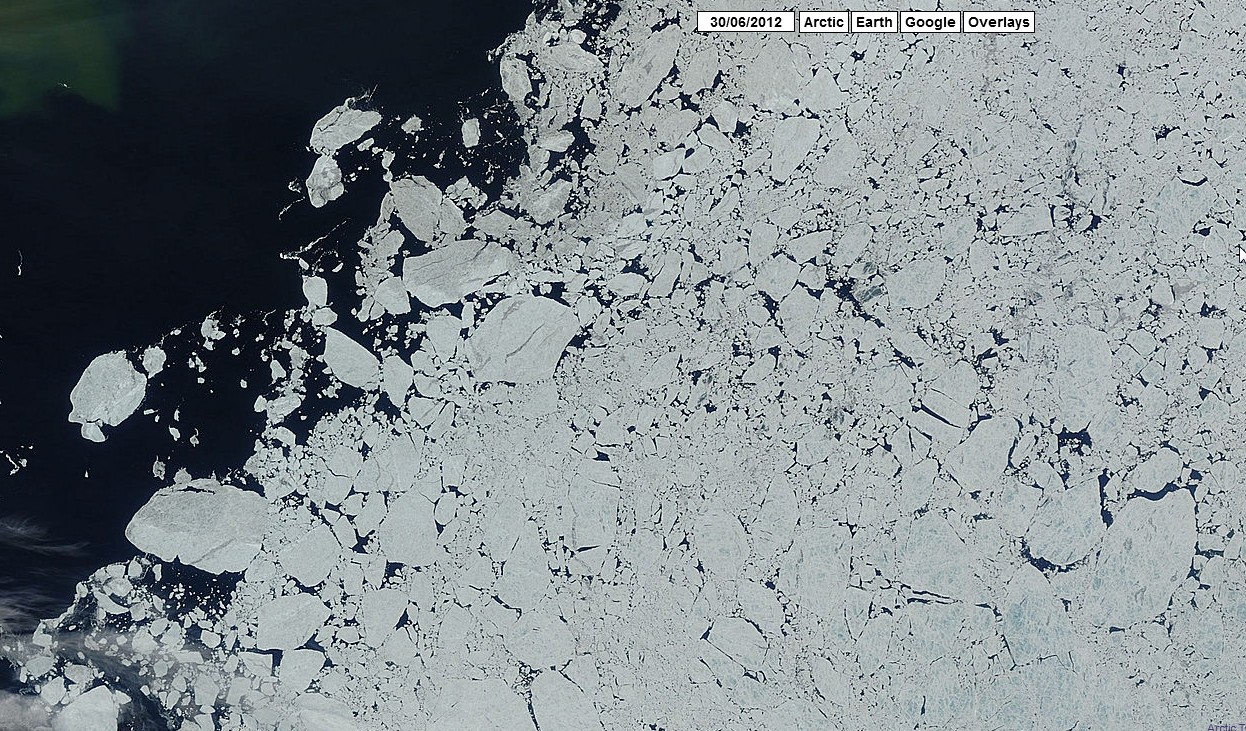Several people are concerned that the ice in the Beaufort Sea appears to be “low concentration” See the green rectangle below
arctic.seaice.color.000.png (900×900)
Satellite imagery shows what is really going on. The Beaufort Sea is full of large chunks of thick multi-year ice. When the wind blows, interstitial space opens up between the rounded blocks.
It will take a long time to melt through all that thick ice, and I don’t know if the remaining eight weeks is long enough.




It’ll be interesting to see what happens. Could be a lower area/extent loss at the expense of a considerable reduction in amount of multi-year ice there. However, if that ice “protects” other areas, there may not be a net loss in older-than-1-year ice.
-Scott
I don`t think so. The ice has a birthday in September. More area means more MYI.
Can you show an example in that Beaufort sea area where the red zone in late June or July survived through Sept. 30? Looking at the late July vs. late Sept maps, I’m seeing the red zones from the summer completely gone at the end of the melt season.
http://igloo.atmos.uiuc.edu/cgi-bin/test/print.sh?fm=07&fd=25&fy=2007&sm=09&sd=25&sy=2007
http://igloo.atmos.uiuc.edu/cgi-bin/test/print.sh?fm=07&fd=25&fy=2008&sm=09&sd=25&sy=2008
In 2010 the Beaufort Sea had much higher concentration than now, but still ended up melting virtually completely:
http://igloo.atmos.uiuc.edu/cgi-bin/test/print.sh?fm=06&fd=30&fy=2010&sm=09&sd=15&sy=2010
My bet 😉 is that red zone you’ve got boxed in will be gone by mid-September.
I`m sorry. I missed the part where I said I wanted to engage in straw man discussions.
Its not a strawman. Lower sea ice concentration = more likely to melt. The past record bears this out.
The ice is lower concentration because it consists of fragments of thick multi-year ice. The interstitial areas are open, just as one would expect. Thick ice takes longer to melt.
“Thick ice takes longer to melt.”
Thanks for the tip.
Of course the naysayers always ignore the fact that the Arctic icecap was at its lowest during the 1930-1940 period when CO2 was below the 350ppm. They hate the idea of a natural cycle ruining their fantasy hypothesis.
Natural cycles do not conform to the straight line on their graphs.
My bet is data tampering will continue in order to enable the alarmists to continue with their narrative of an Arctic free of ice in the next few years.